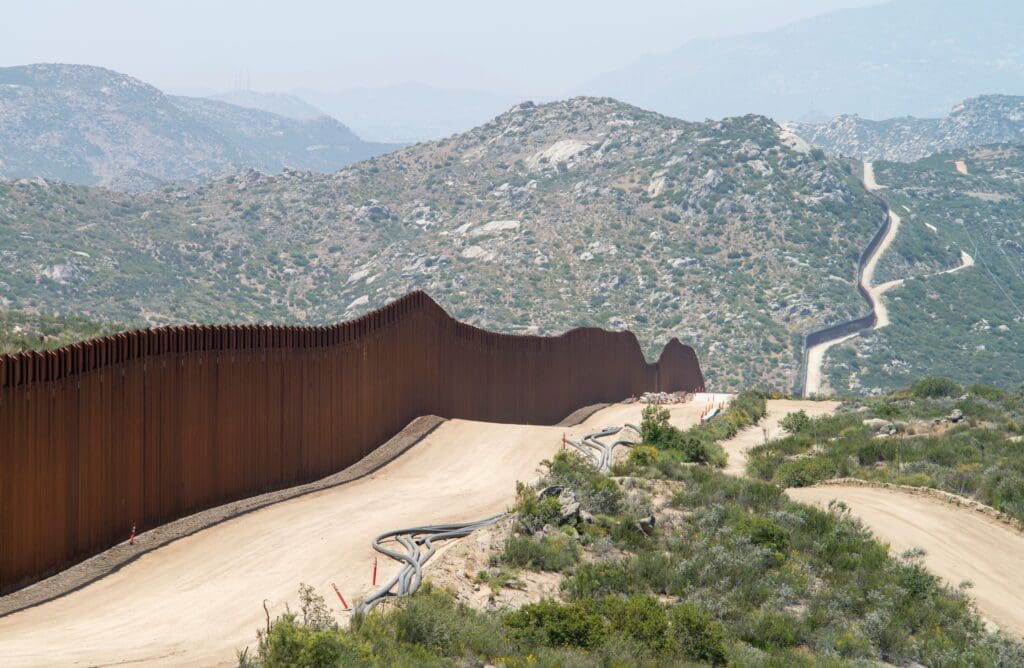Juneteenth and Immigration: The Racial History of America’s Southern Border

By: Christian Griffith
As we reflect on the history of America this Juneteenth, celebrating the day the last U.S. slaves were freed in Texas, we must recognize a heavily racialized issue impacting Texas and the rest of the border, immigration. The movement of people in search of a better life has been used as a bargaining chip for people in all positions of power for decades. We must unpack the history and racism clouding our country’s judgment when it comes to immigration from the Southern border.
The Southern border was not always the land split between the United States and Mexico. That area was the land of the Yaqui, the Apaches, and several other Indigenous groups with hundreds or thousands of years of history. In the 1700s, these groups faced massacre and expulsion by Spanish conquistadors who forced their rule over the people in what is modern Texas, New Mexico, Arizona, and California.
Once Mexico gained its independence from Spain, many in the United States saw it as an opportunity for growth. Anglo-Americans (White English descendants) moved to the region to start ranching and mining projects. In 1836, Anglo-American ranchers and plantation owners in Texas, afraid the Mexican government would “take away their slaves”, declared independence from Mexico. After years of war, those who could vote (Anglo-Americans) chose to join the United States.
The Mexican-American War broke out the following year, leading to the United States’ annexation of the rest of the modern border region by 1848. This new land, with so many migrations and people’s history in it, developed into the awkward transition zone between the US and Mexico that it appears to be today.
The conquest, capture, and annexation of these lands led to a blend of people unfamiliar to much of the United States at the time, with Indigenous, Mestizo, Spanish, and Anglo-American people occupying the same space, all with a unique history and connection to the land. Originally, these borders were not hard lines where one could live and work. People were free and encouraged to travel from one side to the other for whatever they needed.
In the twentieth century, however, the Federal government took on the responsibility of border management and control. The first laws on migration restricted individuals by country of origin, with quotas allowing more Europeans to enter than non-Europeans. The policy then changed in the 1950s to continue to restrict the flow of non-Europeans but also to encourage Mexican migrant labor to support American farming and business.
With the formalization of the migrant labor relationship between the U.S. and Mexico, many individuals from Latin America came to the United States for agricultural jobs and became the largest represented group in Southwestern farm labor. This led to a cultural boom in the 1960s when the Chicano movement advocated for unionization and awareness of the Mexican-American struggle. From then on, Mexican and Latino people were more frequently represented in media, culture, and politics.
As Mexican-American identity became a public matter, so did racist sentiments toward such groups. Racist caricatures labeled Latine people as the source of drugs, crime, and a lack of jobs for poor white people. By the 1990s, Federal laws saw massive changes, shutting down the free flow of Latines on the border and enforcing the shutdown through mass deportations.
In the twenty-first century, the U.S. has seen both progress and regress in how the law treats those coming from the Southern border. Obama established the DACA program, offering undocumented youth a path to citizenship and a better future. Trump then pushed the progress back with his racist rhetoric and attempt to build a border wall. Most recently, Biden signed an executive action heavily restricting the number of people who can come from the Southern border, including those applying for asylum.
When the government changes border policy, it directly impacts thousands of people a day and indirectly changes millions of people’s lives. As advocates for an anti-racist world, we must ask a few questions:
- Are these laws going to directly impact a marginalized group (like Latine people)?
- Is the impact for the benefit of those marginalized, or for the benefit of the majority and those with power they wish to maintain?
Texas joined the United States to keep the “right” to own slaves, seceded for that very same reason in 1861, and in 1865 was the last state to have slaves.
It is important to realize how even today, race and racialized policies most definitely impact marginalized people in Texas, the South, and the rest of the United States.

